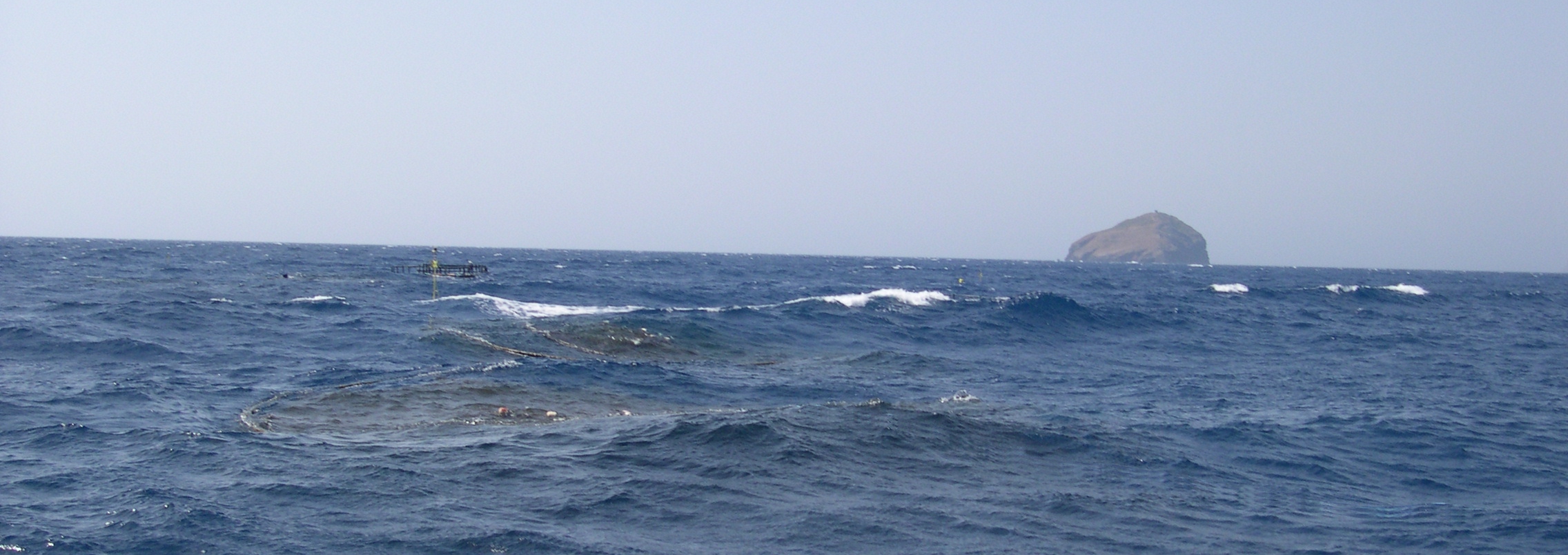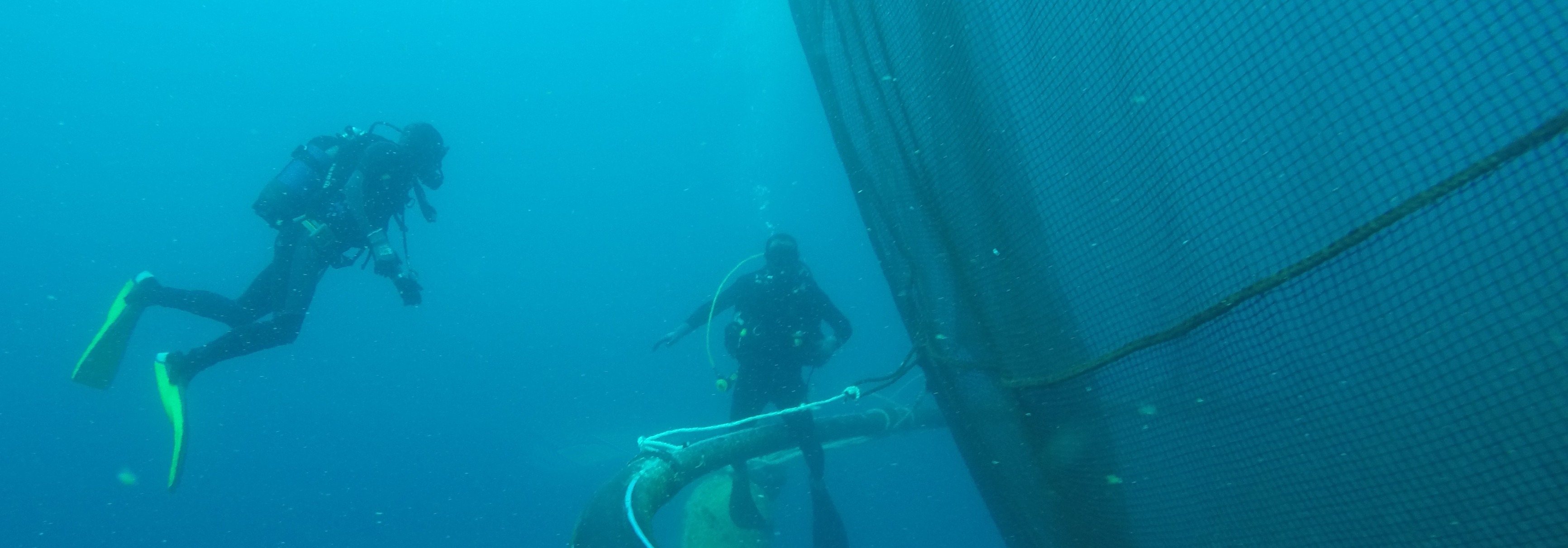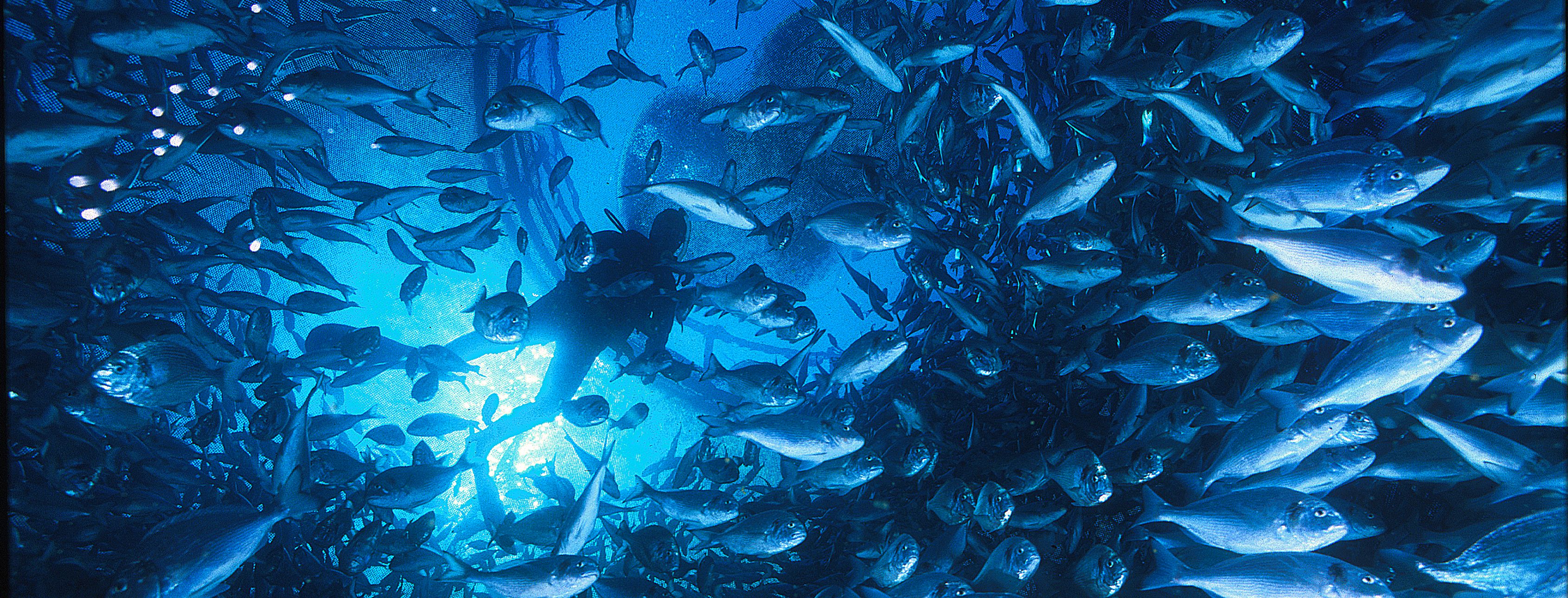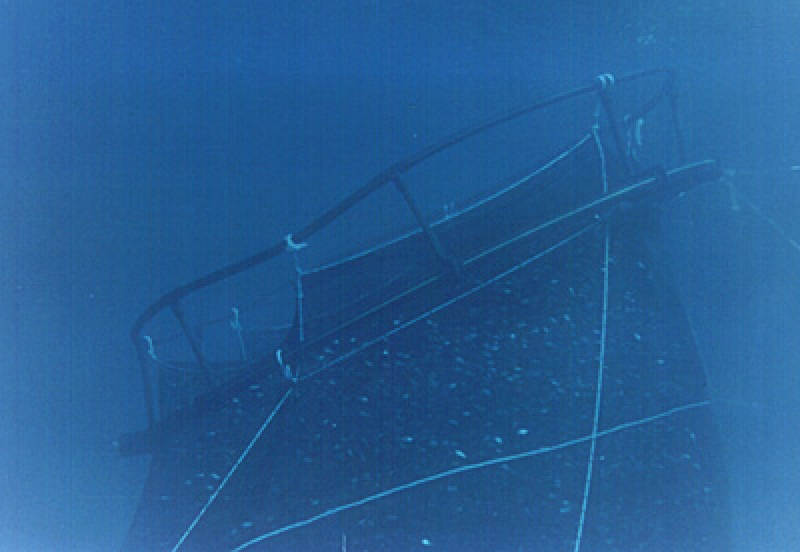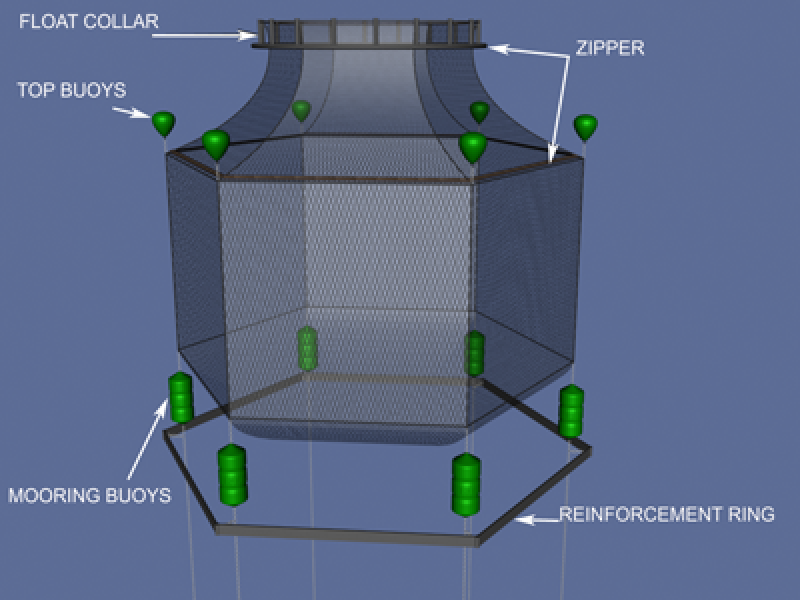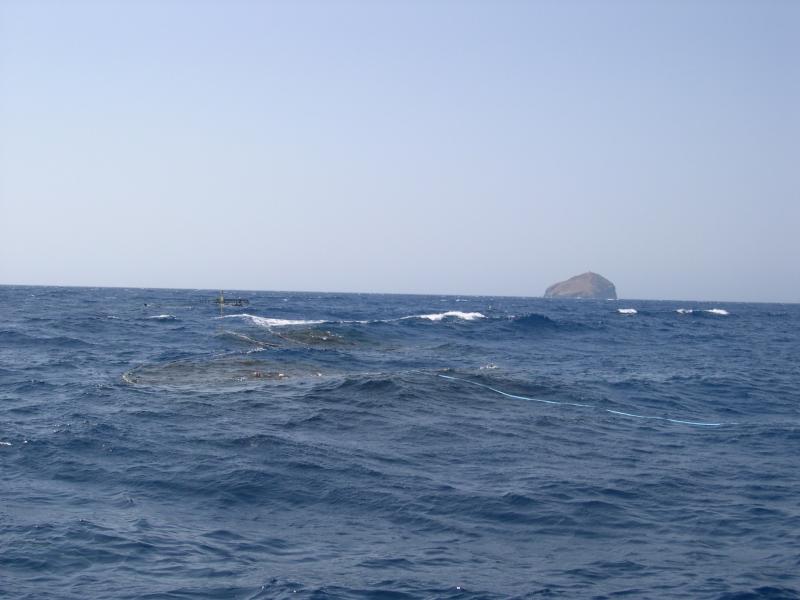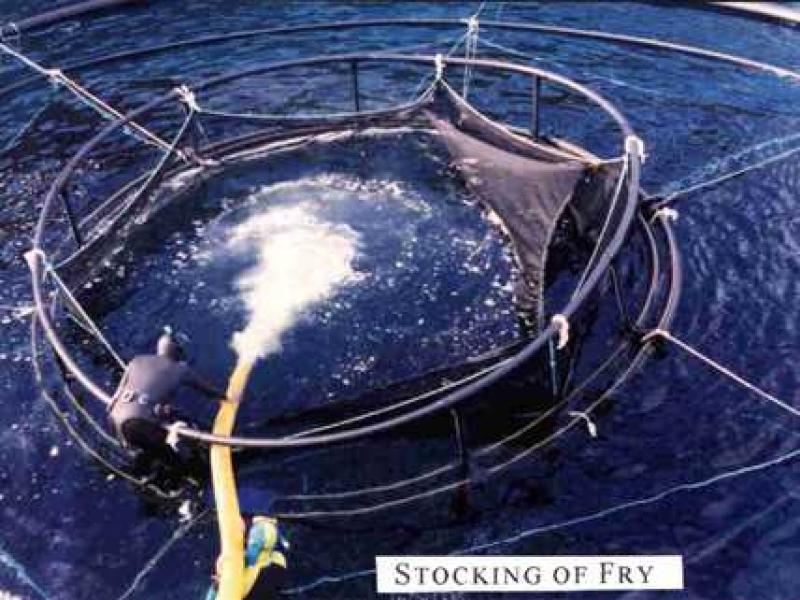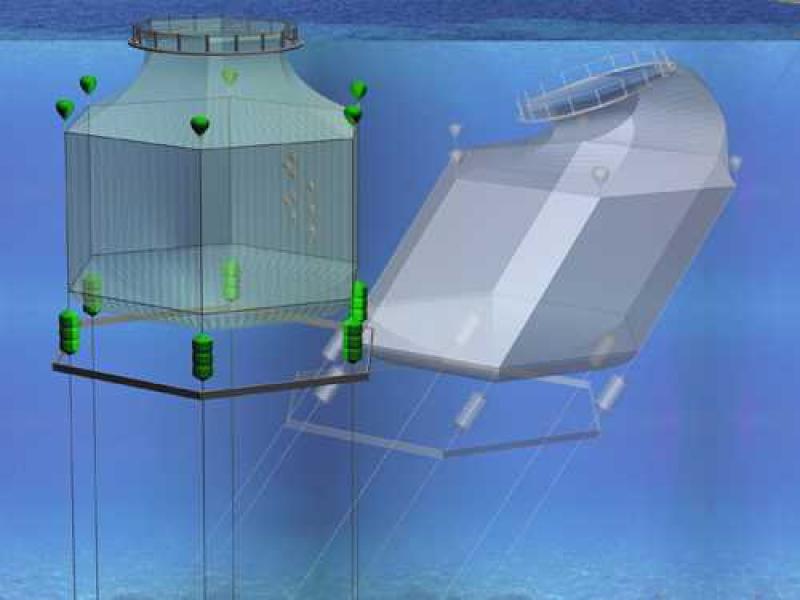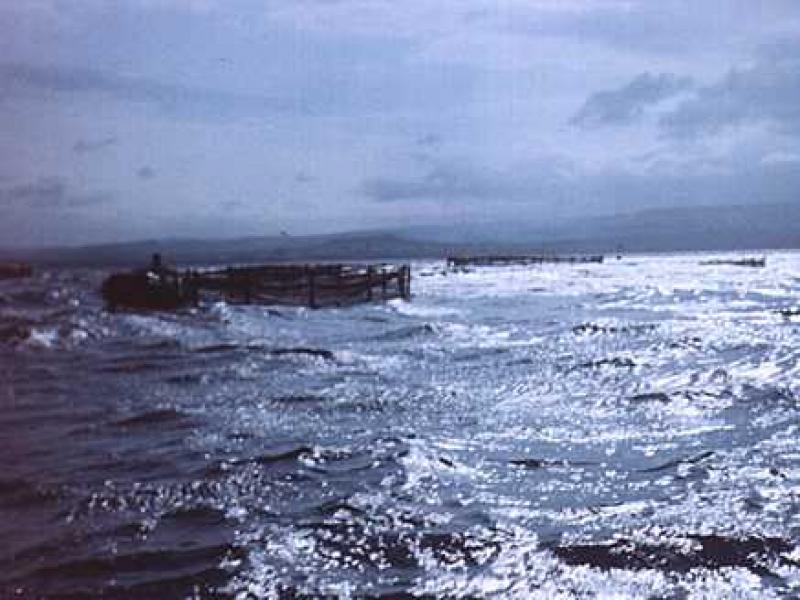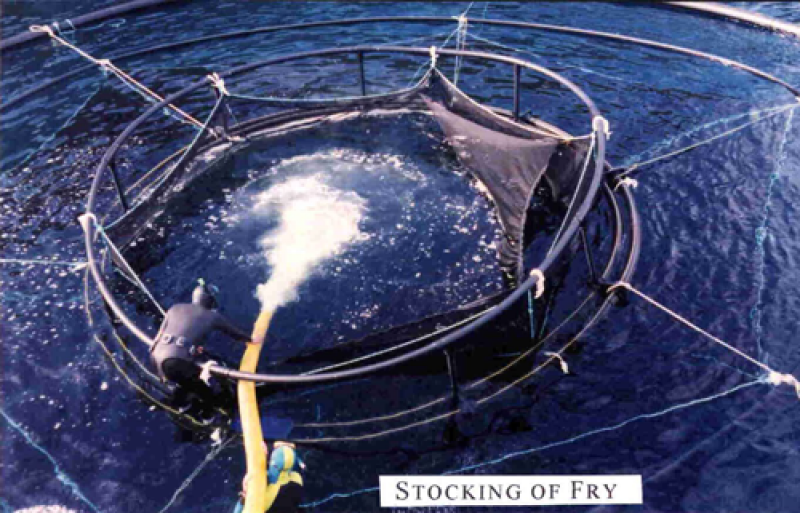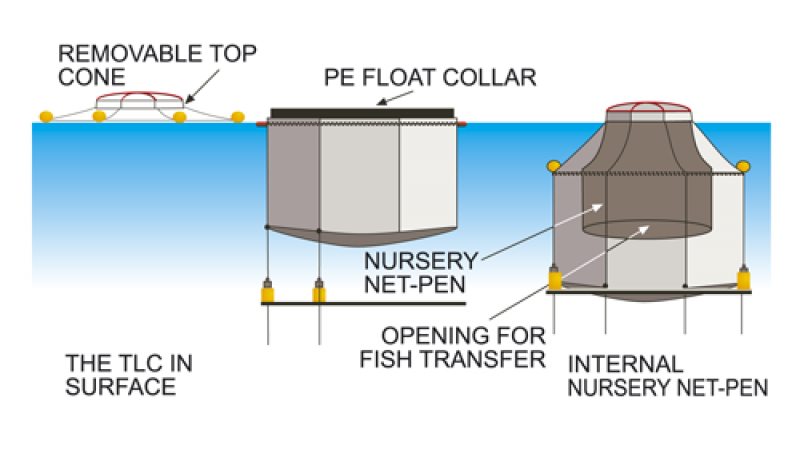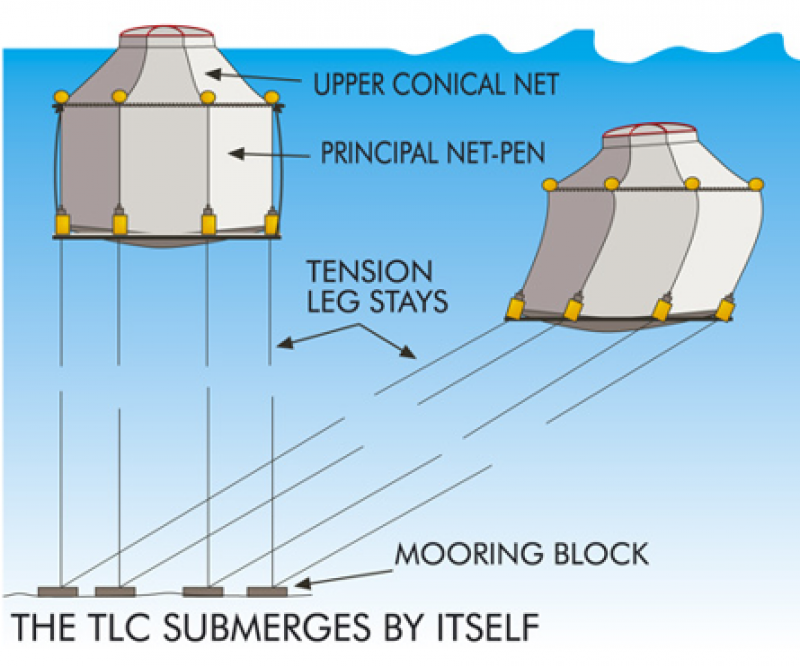
TLC DESIGN
The Tension Leg Cage (TLC) concept is based on the dispersion of Wave energy in the sea.
With increasing depth the waves are sequentially filtered; the sea is virtually calm at a depth corresponding to half the wavelength.
The TLC cage is flexible and small in the upper section where the waves hit hardest, while its supporting structure is positioned at depth. In storm conditions the cage does not oppose the marine forces, but moves in synergy with the waves almost like seaweed, thus minimizing the strains on all cage components.
The TLC cage has been developed together with Marintek-Sintef Institute, and is patented worldwide.
TRADITIONAL CAGES
With conventional cages, the buoyancy is concentrated at the surface. The net-pen and associated weights is supported by the flotation collar on which the wind, current and wave forces all act. The floating collar and respective moorings are thus subject to violent stress, while the net-pen deforms. In high currents the net-pen can be compressed to below 30% of its original volume, while the fish are confined to the severe sea surface conditions, resulting in damage and mortality.
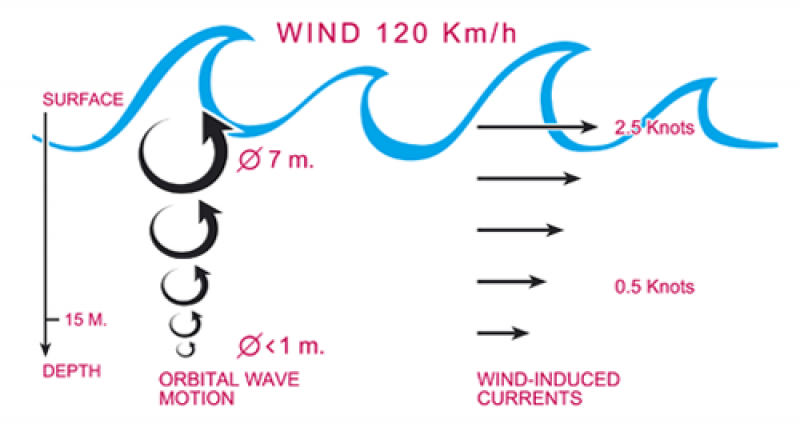
TLC CAGE SYSTEM
The principal net-pen of the TLC remains stable under all conditions, retaining its volume without any violent motion, thanks also to the effective anti-fouling treatment of the net. This ensures a stress-free environment for the fish which continue feeding and growing, without any breaks in production. TLC farms can be sited at considerable depths. The vertical moorings occupy only the area of the net-pen and do not interfere with navigation or fishing and tourism interest. Each cage forms an independent unit. A TLC facility, mooring included, will require an installation area at least 10 times smaller than a facility with conventional cages. The cages can be installed over irregular and steep sea-floors, with mooring lines shorter than the sea depth.
TLC CONSTRUCTION
The TLC consists of:
- The mooring module (clump weights, tension legs, mooring buoys, reinforcement ring) and
- The cage-net module (net-pen, top buoys, float collar).
The mooring module is permanently installed, while the cage-net module can be released to the surface for fish handling, towage, etc., just like any surface cage.
The net-pen consists of a lower cylindrical part (principal net-pen) and an upper conical part. These are jointed with heavy-duty zippers, for fast and convenient removal.
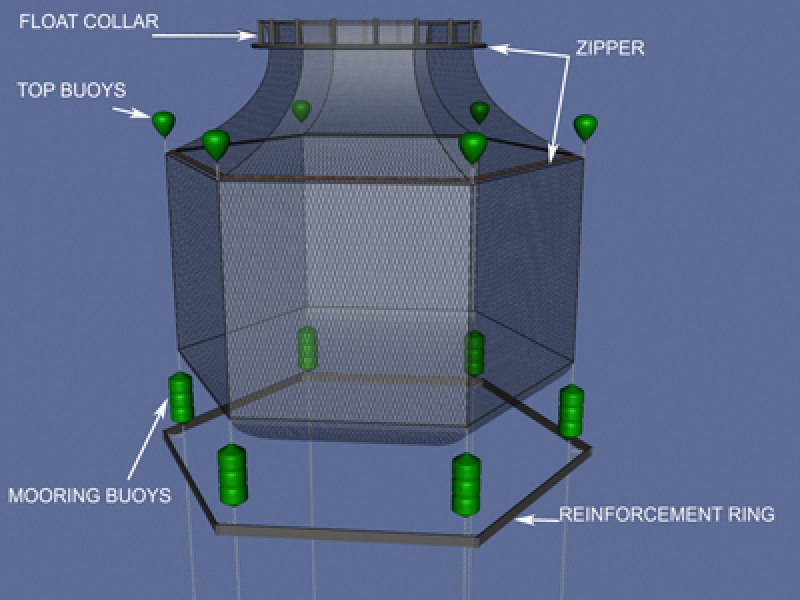
Documenti
Foto
Description
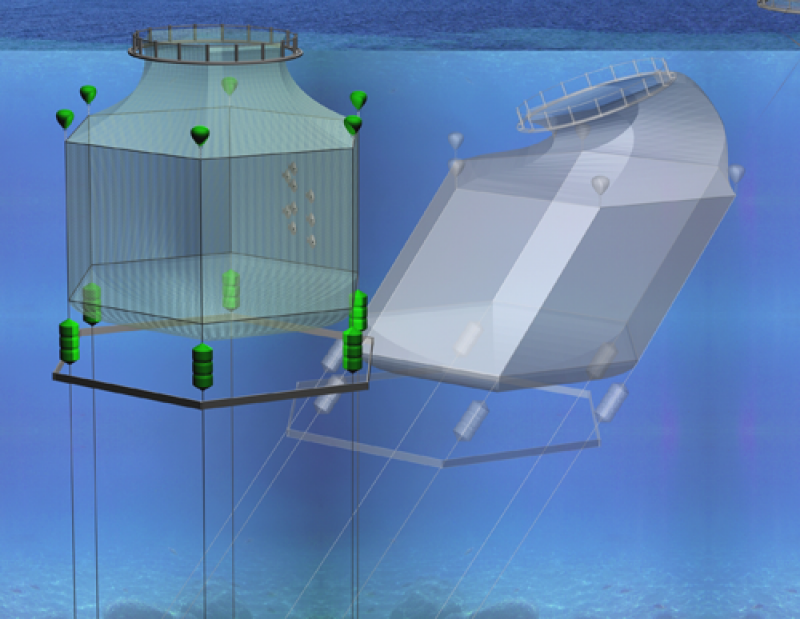
-
Optimum conditions for growth
-
Security for the fish stock
-
Produced by manufacturer of netting & ropes
-
Can be installed on all sea substrates, even steep slopes
-
Easy to assemble and install even in remote areas.
-
Low investment compared to other open-sea cages.
-
Trouble-free in operation and simple to maintain.
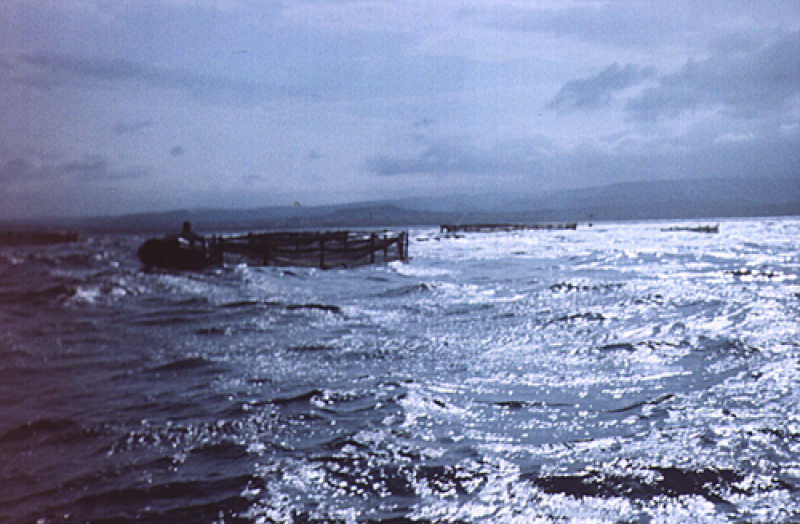
SEA WORTHINESS
In storm conditions and current of about 1 knot, the TLC submerges by itself, retaining over 90% of the net--pen volume. With currents up to 3 knots the principal net-pen is not subjected to any appreciable volume reduction.
TLC’s unique construction allows farming where intermittent currents make the use of traditional equipment impossible. TLC’s are operating on sites exposed to 7.000 km of open-sea fetch and waves over 10 m. high.
The success of commercial farms in the Mediterranean and Atlantic confirms the validity of our TLC technology
DURABILITY
The components of the TLC are manufactured and tested to resist open-sea conditions with an ample safety margin. Maintenance requirements are minimal since the structure is not subjected to extreme forces at the sea surface.
The elements of the cage are easy to transport and do not require heavy lifting equipment nor special machinery for assembly and installation.
The TLC can be installed on remote sites with low overall costs.
Foto
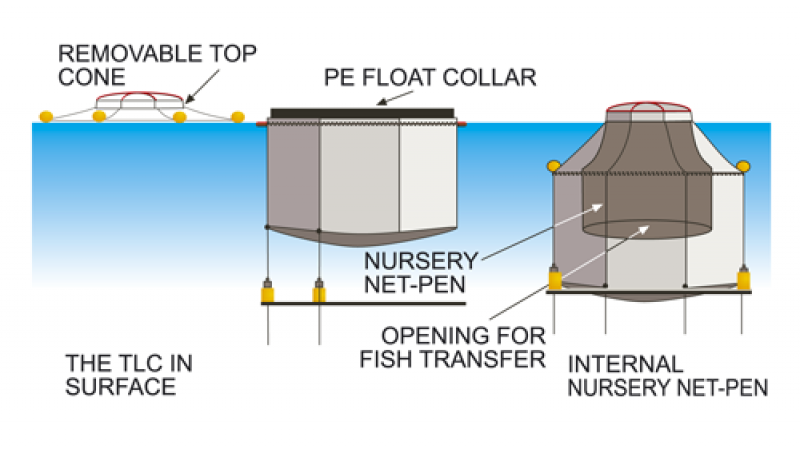
OPERATING THE TLC
The knowledge matured with traditional fish farming cages is applied to the management of the TLC farms. Fingerlings can be transferred directly from a truck to the TLC cage-net module in surface position. This is then towed to site and fixed to the cage mooring module. An internal nursery net-pen is available for stocking small fry. It is equipped with a bottom opening for gentle subsequent transfer of fish into the principal net.
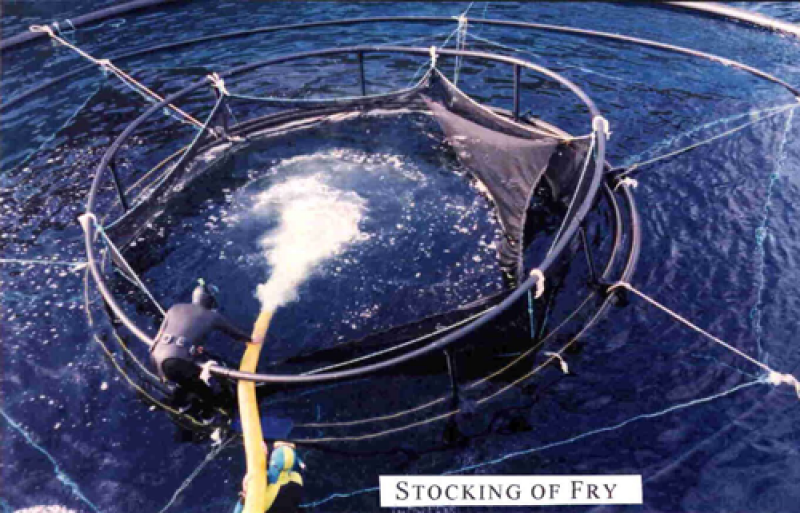
FEEDING
A Feed Buoy has been specifically developed as a simple and rational solution for automatic feeding of a 4 TLC- cage module.
Feed barges with high storage capacities are employed, in function of the number of cages, distance from shore, labour and investment cost.
The anti-fouled net-pen not require changing for periods up to 18 months. If required, the net of a TLC can beeasily changed after bringing the cage to the surface.
Fish is harvested utilizing a “double-bottom” net panel. Alternatively, the net-pen is raised to the surface and attached to a PE float collar.
The upper conical net is removed and the fish is harvested with the sweep-nets on site or at the port. The lowering and release of the cage-net module is a quick process easily performed with a small farm boat.
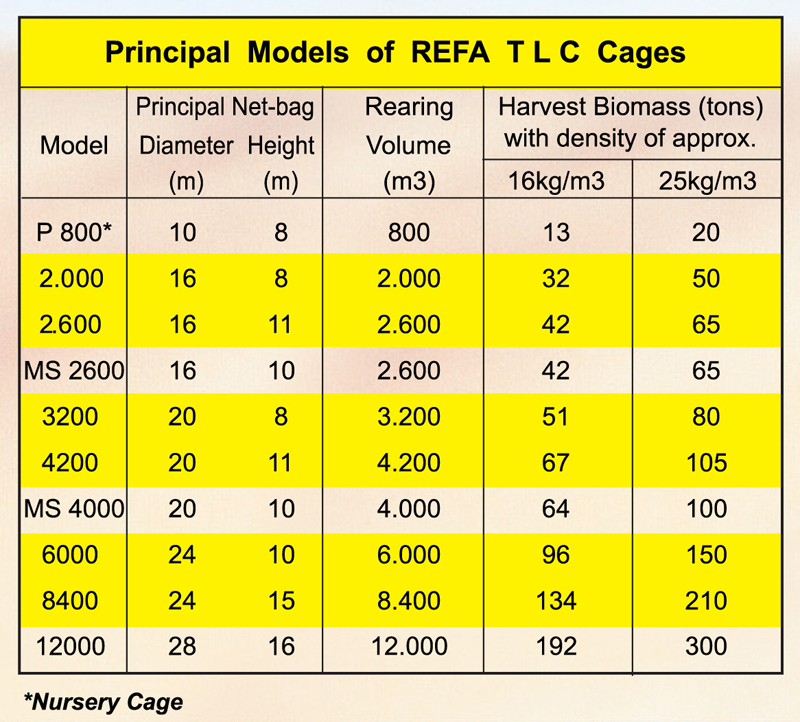




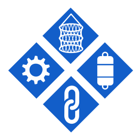
 Services
Services Studies & Projects
Studies & Projects Research & Development
Research & Development